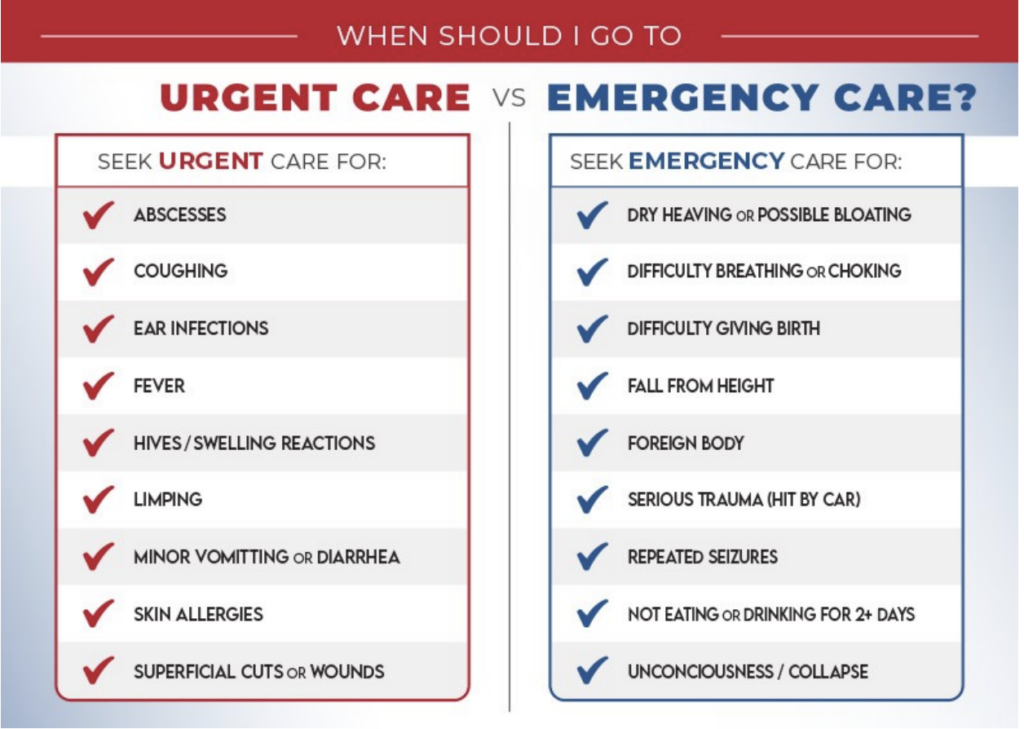Is your pet sick? Limping? Does something just not seem right? We are happy to help!
We are available for urgent cases during our regular business hours for both established and new patients. Our hospital offers digital x-ray, ultrasound, in-house complete blood count (CBC) and chemistry analyzers, urinalysis, and more.
We are able to hospitalize patients if necessary, but please be aware that we are not a 24-hour facility and do not have staff available overnight. If your pets condition is critical in nature and it is in your pet’s best interest, we may recommend referral to a 24-hour care facility, such as P.V.S.E.C.
Urgent Care vs. Emergency Care

Emergency veterinary hospitals prioritize and treat patients based on their symptoms or condition severity. Any patient needing medical attention but not in a life-threatening situation may be asked to wait.
An urgent care situation involves issues that need medical attention but are not life threatening. These patients might be uncomfortable, but they are stable and can be seen at regular appointments.
Doctors in emergency hospitals use the patient severity index to decipher your pet’s condition. This index includes the following levels:
- Level one: Resuscitation – the patient is seen before all others, exhibiting a severe physical trauma or cardiac arrest.
- Level two: Emergent – these traumas are not life-threatening but are time sensitive, including a venomous snake bite and heat stroke.
- Level three: Urgent – these patients are seen after levels one and two are taken care of. Examples of urgent care include sudden illness, severe cuts, vomiting, trouble walking, allergic reactions or difficulty urinating.
- Level four: Non-urgent – minor cuts, prolonged low appetite, limping, fever, and mild injuries are non-urgent conditions can be treated after the first three levels.
- Level five: Stable – the patient is uncomfortable but stable, experiencing diarrhea, low appetite, ear infection, or skin irritation.
As a rule of thumb, pets in the first two levels should be taken to the emergency room. Levels three through five can receive veterinary urgent care services.
Explore Our Complete List of Veterinary Services in Seven Fields, PA
What's Next
Call us or request an appointment online!
Meet with a doctor for an initial exam.
Put a plan together for your pet.

